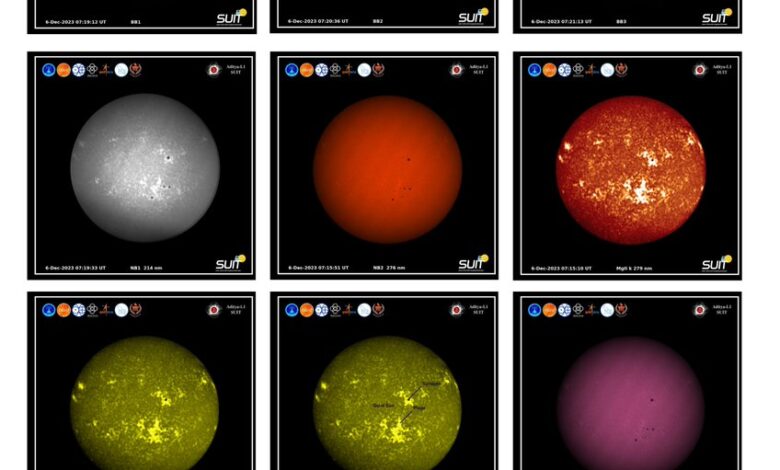Aditya-L1’s SUIT Reveals Solar Secrets: First Full-Disk Images in UV Wavelengths Unveiled

The Solar Ultraviolet Imaging Telescope (SUIT) aboard the Aditya-L1 spacecraft has achieved a groundbreaking milestone by capturing the Sun’s full-disk images in the 200-400 nm wavelength range. Launched by ISRO, SUIT’s recent activation on November 20, 2023, marked the commencement of a new era in solar observation.
Under the collaborative leadership of the Inter-University Centre for Astronomy and Astrophysics (IUCAA), Pune, the development of SUIT involved key contributions from ISRO, Manipal Academy of Higher Education (MAHE), Centre for Excellence in Space Science Indian (CESSI) at IISER-Kolkata, Indian Institute of Astrophysics Bengaluru, Udaipur Solar Observatory (USO-PRL), and Tezpur University Assam.
The telescope’s eleven filters, such as NB1, NB2, NB3 (Mg II k), NB4 (Mg II h), NB5, NB6, NB7, NB8 (Ca II h), BB1, BB2, and BB3, enable precise observations of the Sun’s photosphere and chromosphere. The captured images, revealing sunspots, plage, and quiet Sun regions, promise groundbreaking insights into the solar atmosphere’s magnetized dynamics.
SUIT’s successful pre-commissioning phase culminated in its first light science images on December 6, 2023. These images, a first in the 200-400 nm range, serve as a critical resource for scientists studying the intricate details of the Sun’s behavior and its potential impact on Earth’s climate. The observations will contribute to a deeper understanding of the dynamic coupling of the solar atmosphere and provide valuable constraints on the effects of solar radiation.
The pioneering SUIT project showcases India’s prowess in space exploration and collaborative scientific endeavors, advancing our knowledge of the Sun’s mysteries.





